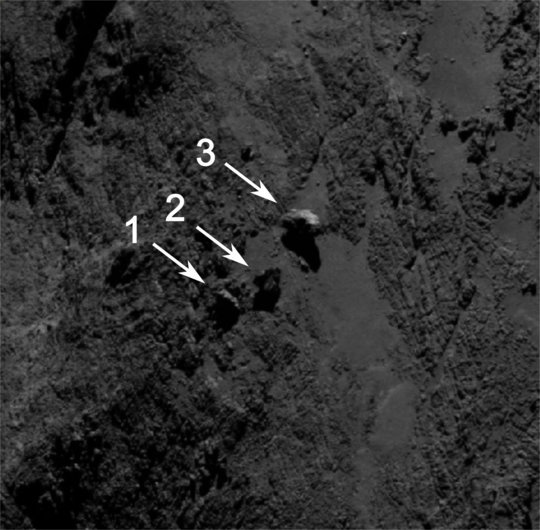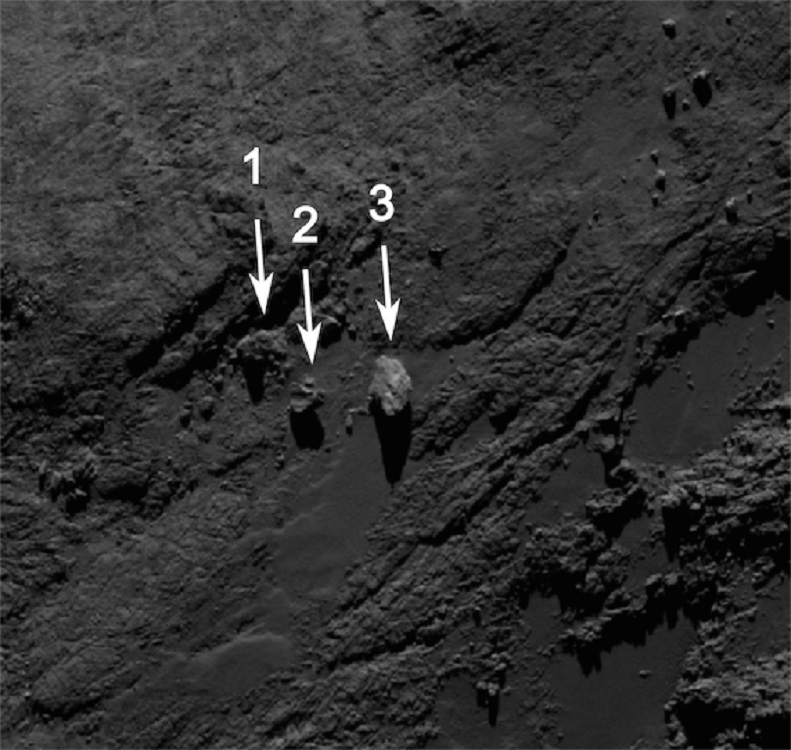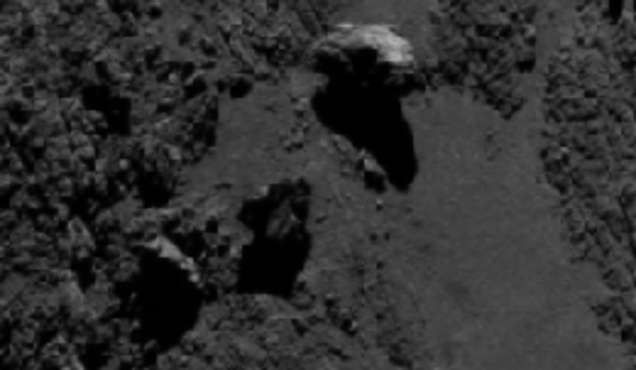Comet 67P: Stonehenge In Space Found By Rosetta Spacecraft — ‘Balancing’ Rocks Baffle Scientists
A strange rock formation that’s being compared to Stonehenge here on Earth was discovered on Comet 67P, the rock hurtling through the solar system that since late last year has been continually explored and photographed by the Rosetta spacecraft.
The spacecraft sent back photos revealing three large rocks that appear to be lined up in a row and “balancing” on end, similar to the mysterious 4,000-year-old megalith on the English plain. But the giant boulders discovered in the comet’s “Aker” region also appear to resemble the giant “balancing rocks” found in terrestrial areas such as the Arizona desert.
The largest of the three rocks is about 100 feet wide and has, the scientists who examine photographs from Rosetta say, “only a very small contact area with the comet’s surface.”
Here is one angle depicting the three mysterious rocks.

On Earth, such balancing rocks are formed by water or wind erosion, or by glaciers, which deposit the boulders into place. But none of those things exist on the surface of Comet 67P, at least as far as scientists know.
Of course, in the case of Stonehenge, a group of giant rocks was deliberately set in place by human beings — who certainly do not exist on the comet.
Last year, the Rosetta scientists announced that the space probe discovered what appeared to be organic molecules in the Comet 67P atmosphere.
But molecules that form the most basic building blocks of life are a very long way from functioning life itself — much less human or humanoid beings.
“How this apparent balancing rock on Comet 67P/C-G was formed is not clear at this point,” said Rosetta photographic team researcher Holger Sierks.
“Interpreting images of the comet’s surface can be tricky,” the scientist added.
Indeed, it remains possible that the rocks, seen from another angle in the Rosetta photograph below, are not “balancing” at all, but simply appear that way due to tricks of light and shadow on the comet’s surface.

Here is an enlarged image of the mysterious boulders.

The Rosetta team spotted the strange rock formation as early as September of last year, but it took them a while to figure out what they were looking at.
“We had noticed this formation already in earlier images. However, at first the boulders did not seem to differ substantially from other we had seen,” said European Space Agency scientist Sebastien Besse.
Now, the Rosetta scientists are waiting to see what happens to the bizarre “Stonehenge in space” as Comet 67P plunges closer to the sun, heating up and releasing the trail of gases and dust that gives comets their distinctive tail.
[Images: European Space Agency]









